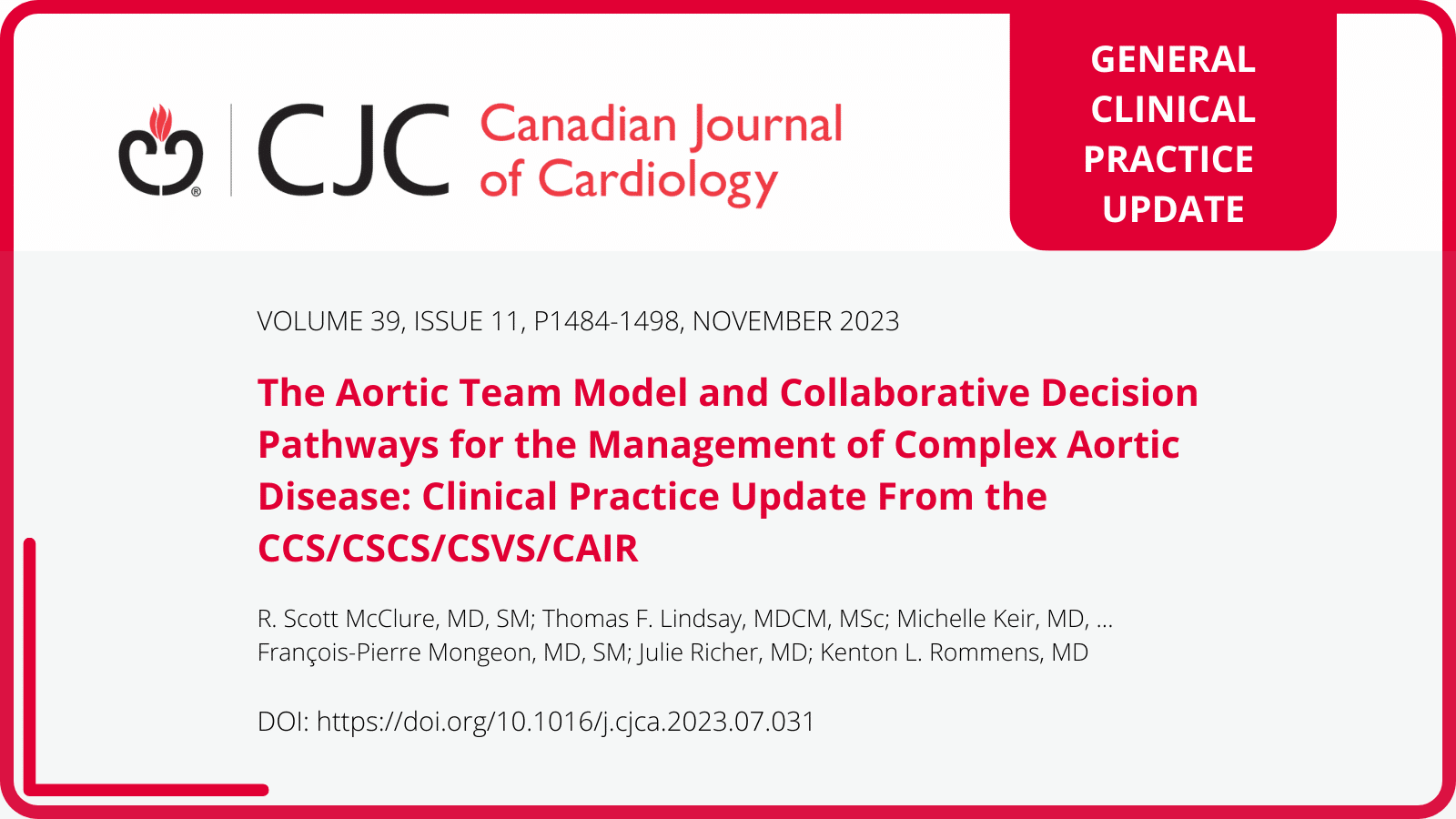
Under the co-chair leadership of Drs. Scott McClure, Tom Lindsay, and Michelle Keir, the multi-society Aortic Team Model and Collaborative Decision Pathways for the Management of Complex Aortic Disease Clinical Practice Update proudly launches in the November issue of the Canadian Journal of Cardiology. The aims of the CPU are to affirm the importance of the aortic team concept, to provide an expert consensus on what constitutes an aortic team, and to provide a framework to guide efforts to incorporate the aortic team model into daily practice across Canada.
The co-chairs and writing panel represent the aortic team recommended in the CPU, with active and meritorious contributions from cardiology, cardiac surgery, vascular surgery, interventional radiology, and genetics. This team is commended for assembling, drafting, collaborating, and completing this CPU with speed, excellence and excellent teamwork.
“Aortic disease management becomes increasingly nuanced with increasing complexity. Providing the best care for our patients requires collaborative treatment decisions and a team mentality. It is the best way to ensure all treatment options are considered for the betterment of our patients.“ – Scott McClure, Co-chair of the CCS/CSCS/CSVS/CAIR Team Model and Care Pathways for Aortic Disease CPU
The Team Model and Care Pathways for Aortic Disease CPU focuses on the aortic arch, descending thoracic, and thoracoabdominal aorta, as these are the aortic segments where specialties, care plans, and treatment have the most substantial overlap. The importance of interdisciplinary aortic clinics is emphasized, as they promote shared-decision making, facilitate life-long surveillance and referrals for unique conditions, while also streamlining care pathways for aortic disease that were historically fragmented across specialties. This may mean regionalizing care for increasingly complex aortic disease, to maintain concentration of expertise and increased volume-outcome ratios for high-risk endovascular and surgical procedures.
The Aortic Team Model:

Other News
See AllCelebrating National Volunteer Week at CCS
April 18, 2024
CCS members have a diverse range of skills, experience, interests, and backgrounds. One common trait...
CCS News MembershipApply to Join the CCS Board of Directors
March 5, 2024
Take your career and your profession to new frontiers! Apply today to be part of our Board of...
CCS News MembershipCCS Member Dr. Ariane Marelli Appointed Scientific Director of CIHR Institute of Circulatory and Respiratory Health
January 5, 2024
The CCS extends our heartfelt congratulations to Dr. Ariane Marelli on her recent appointment as the...
CCS News Membership